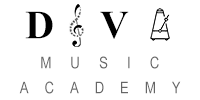Medieval and Polyphonic Music
Until the 20th century, there was a general perception that the history of music began with Bach. Only with the huge growth in musical research and scholarship, together with the explosion of the “early music movements” in the later decades of the 20th century, did many lost masterpieces of the medieval and Renaissance periods come to lights, prompting a re-evaluation of their composers’ achievements.

Sacred music
Music in the Middle Ages was largely the preserve of the church.
Surviving medieval sources were mostly produced by monastic scribes, and kept in monastery libraries. While secular music existed, much of it was improvised, so the earliest music to survive was generally intended for sacred use.
The names of individual composers become scarcer the further back into history we travel.
Among the earliest musicians who may be singled out from the 12th and early 13th centuries are the French composers Leonin and Perotin, who were associated with the newly built cathedral of Notre-Dame in Paris. A spate of enormously popular recordings had recently revealed the visionary music of the 12th-century nun Hildegard of Bingen, who not only has the distinction of being one of the earliest known composers, but was also a woman working in a field where women have traditionally not been prominent. She is now something of a feminist icon.
Performances and recordings by early music groups have also uncovered a wealth of music by unnamed composers derived from medieval manuscript sources, such as the 13-th century Spanish Cantigas of Alfonso X.
Polyphony
The French composer Guillaume de Machaut was the single most important musical figure of the 14 th century. His many innovations included being the first to compose a complete setting of the Ordinary of the Mass, the first to write music in four parts (which became the standard polyphonic combination), and one of the first to set the typical secular poetic forms of his day: ballade, rondeau and virelay.
For the next century, the musical centres of gravity remained the courts and churches of northern France and Flanders, which produced the sacred and secular works of the Flemish composers associated with the court of the dukes of Burgundy: Dufay, Ockeghem, Josquin des Prez and their contemporaries. However, many drew inspiration from prolonged visits to Italy, where musical activity flourished at important courts such as those of Ferrara and Mantua.


Composers of medieval era
Hildegard of Bingen – German (1098-1179)
Specialist Genres: Plainsong settings of her own poetry.
Major work: Ordo virtutum; Symponia armonie celestium revelationum
The Notre-Dame School – French
Active: Leonin (c.1163-90), Perotin (c.1200)
Specialist Genres: Early polyphonic sacred music.
Major works: Magnus liber, motets and graduals
Guillaume de Machaut – French (1300-1377)
Specialist Genres: Sacred and secular vocal music of the ars nova
Major works: Notre-Dame Mass; motets; secular songs
Guillaume Dufay – Flemish (1397-1474)
Specialist Genres: Polyphonic sacred and secular forms
Major works: Motets; Masses; songs
Johannes Ockeghem – Flemish (1410-1497)
Specialist Genres: Polyphonic sacred works
Major works: 14 Masses
Josquin Des Prez – Flemish (1440-1521)
Specialist Genres: Polyphonic sacred works and secular songs
Major works: 19 Masses, including Pange lingua and De beata virgine
Giovanni Pierluigi da Palestrina – Italian (1525-1594)
Specialist Genres: Polyphonic sacred music
Major works: Missa Papae Marcelli (1567); Missa Assumpta est Maria (1567); Missa brevis (1570); Stabat Mater (1590)
Orlande de Lassus – Flemish (1532-1594)
Specialist Genres: Polyphonic sacred and lyrical secular music
Major works: Psami Davidis poenitentiales (1584); Tristis est anima mea (1568);
“Adoremus te, Christe” (1604) and many other motets
Thomas Tallis – English (1505-1585)
Specialist Genres: Polyphonic motets in Latin and English
Major works: Motet Spem in alium (1570); Lamentations of Jeremiah; Cantiones sacrae
William Byrd – English (1543-1623)
Specialist Genres: Sacred music, songs, madrigals, keyboard works, consort pieces for viols.
Major works: Masses, three Latin and one English; 140 keyboard pieces, including The Queenes Alman and Wolsey’s Wilde.
English Madrigal School
The madrigal, a setting of a (usually secular) text for several voices – developed in Italy towards the end of the 13th century, but flowered some 300 years later in the hands of both Flemish and Italian composers, including Gesualdo and Luca Marenzio (1558-99). During the reign of Elizabeth I (1558-1603) this immensely popular form was imported to England by Italian composers working at the English court. The publication in 1588 of the Italian collection Musica transalpine inspired native composers to follow the Italian example.
Source: The Great Composers by Wendy Thompson
